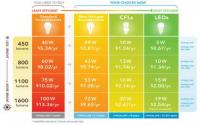
If you're anything like me, it was easier to get up this morning than it has been in a while. It wasn't just the extra zzzs I caught over the weekend; yesterday's time change meant that it was already light when my alarm went off. Sure, it'll be dark before I get home tonight, but as I put on my sunglasses and cruised toward work, I was feeling pretty good about this whole end-of-Daylight-Saving-Time thing.
Until I heard this: Crime peaks during the "extra" hour of evening darkness. Apparently criminals aren't early risers, so they weren't taking advantage of last week's dark mornings, but the time change offers an opportunity many can't resist.
The anti-DST news kept coming when I checked my Google-alerts. This economist argues that the practice is so inefficient and unproductive that we should just bag it all together and transition to just two national time zones.
Of course, arguments like these bubble up twice a year, every year, and the biggest change we've seen was the month-long expansion of DST in 2007.
One thing's for sure, though: since we're all going to need to turn the lights on earlier this evening, we might as well turn on the most energy efficiency lights possible. Luckily, the NRDC has a handy guide to chosing the right bulb for the right socket.
As they point out, it's not as simple as deciding between a 60W or 100W bulb - now you need to consider lumens (brightness), color tone ("warm white" is closest to incandescent light), cost (both initial and lifespan), and directionality (look for reflector bulbs for down lighting).
Choosing the right bulb is no small thing. NRDC reports that "once all sockets have a CFL (compact fluorescent) or LED (light-emitting diode) bulb in them, consumers will pay $13 billion less per year in their electric bills, and "we will save 30 large (and polluting) coal-burning power plants worth of electricity annually."
If you want to cut your bills more quickly, schedule a FREE energy consult and learn how cost-effective upgrades like air sealing and insulation can cut your heating bills by 25% or more.
